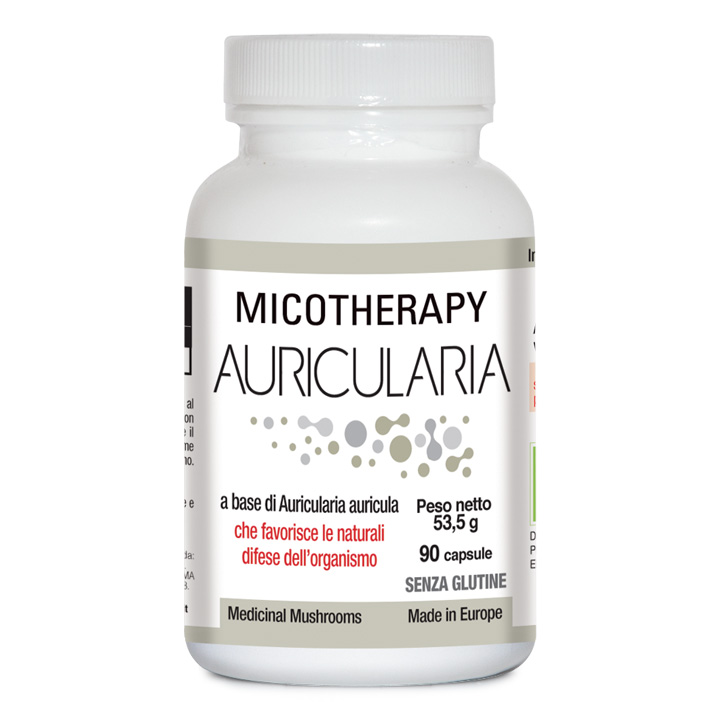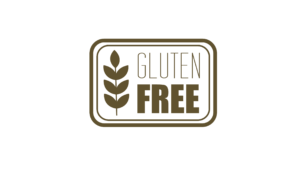
Protezione dei vasi sanguigni
Integratore alimentare a base di Auricularia (Auricularia auricula Judae) da coltivazione biologica (IT BIO 006) – Made in Europe.

Proprietà:
Ricca in polisaccaridi, glicoproteine, aminoacidi, precursori della vitamina D, vitamine B1, B2 e B3, beta-carotene, potassio, magnesio calcio, ferro e rame, l’Auricularia viene tradizionalmente utilizzata per potenziare e sostenere il sistema immunitario e per contrastare stanchezza e carenza di energia.
Grazie all’elevato contenuto di melanina, che in questo fungo arriva fino al 30% (riferito al peso secco del fungo), l’Auricularia è uno dei funghi a più elevato valore antiossidante. La sua azione si esplica sul sistema cardiovascolare, in particolare sulla circolazione venosa periferica ed è quindi particolarmente indicato per la stasi venosa, le emorroidi e l’insufficienza venosa periferica. Grazie agli effetti di vasodilatazione favorisce la regolazione della pressione sanguigna. La presenza di polisaccaridi insolubili e mucillagini, con azione prebiotica e regolarizzante del transito intestinale, lo rendono utile in caso di sindrome metabolica
Ingredienti:
- Auricularia auricula Judae sporophorum da agricoltura biologica (IT BIO 006)
Modalità d’uso:
3 capsule al giorno preferibilmente lontano dai pasti
Formato:
confezione da 90 capsule
Note:

NO OGM
Ingredienti da agricoltura biologica – Made in Europe
Inserito nel registro degli integratori: codice 84613
Codice Paraf: 970436123
| TENORE MEDIO DEGLI INGREDIENTI CARATTERIZZANTI | PER DOSE GIORNALIERA (3 CPS) |
| Auricularia auricula sporophorum | 1500 mg |
Bibliografia:
- Lindequist U et al. The Pharmacological Potential of Mushrooms Evid. Based Complement. Altern. Med., Sep 2005; 2: 285 – 299
- Kho YS et al. Antioxidant capacity of fresh and processed fruit bodies and mycelium of Auricularia auricula-judae (Fr.) Quél. J Med Food, Feb 2009; 12(1): 167-74
- Ma Z et al. Structure and chain conformation of beta-glucan isolated from Auricularia auricula-judae. Biopolymers, Jul 2008; 89(7): 614-22
- Acharya K et al. Antioxidant and nitric oxide synthase activation properties of Auricularia auricula.Indian J Exp Biol, May 2004; 42(5): 538-40
- Zuo JC et al. [Effect of Auricularia auricula polysaccharide on PBMCs proliferation and cytokine expression in vitro] Zhong Yao Cai, Jan 2008; 31(1): 76-9
- L Zhang L et al. Properties of Auricularia auricula-judae beta-D-glucan in dilute solution. Biopolymers, Dec 1995; 36(6): 695-700
- Chen G. Effect of polysaccharide from Auricularia auricula on blood lipid metabolism and lipoprotein lipase activity of ICR mice fe a cholesterol-enriched diet. J Food Sci, Aug 2008; 73(6): H103-8
- Hua Zhanga et al. Purified Auricularia auricular-judae polysaccharide (AAP I-a) prevents oxidative stress in an ageing mouse model. Carbohidrate Polymers – Vol 84,1: 11 February 2011, Pages 638–648
- Acharya K, et al. Antioxidant and nitric oxide synthase activation properties of Auricularia auricula. Indian J Exp Biol, May 2004; 42(5): 538-40
- Cai M et al. Extraction, antimicrobial and antioxidant activities of crude polysaccharides from the Wood Ear medicinal mushroom Auricularia auricula judae (higher Basydiomycetes). International Journal of Medicinal Mushrooms; Volume 17, 2015 Issue 6
- Ying Jiazhu et al. Icons of Medicinal Fungi from China. Science Press, Bejing, China, 1987
- Yuan Z. et al. Hypoglycemic effect of water-soluble polysaccharide from Auricularia auricula-judae Quel on genetically diabetic KK-Ay Mice. Bioscience, Biotechnology & Biochemistry 1998; 62(10): 1898-1903
- Yuan Z. et al. Ameliorating effects of water-soluble polysaccharides from Woody Ear (Auricularia auricula-judae Quel.) in genetically diabetic KK-Ay Mice. Journal of Nutritional Science & Vitaminology 1998; 44(6): 829-840
- Takeujchi H. et al. Reductive effect of hot-water extracts from woody ear (Auricularia auricula-judae Quel.) on foo intake and blood glucose concentration in genetically diabetic KK-Ay mice. J Nutr Sci Vitaminol (Tokyo), Aug 2004; 50(4): 300-4
- Shi YL et al. Mushroom-derived preparations in the prevention of H2O2 induced oxidative damage to cellular DNA. Teratog Carcinog Mutagen, Jan 2002; 22(2): 103-11
- Cheung, P. C. The hypocholesterolemic effect of two edible mushrooms: Auricularia auricula (tree-ear) and Tremella fuciformis (white jelly-leaf) in hypercholesterolemic rats. Nutrition Research, 1996; 16(10): 1721-1725
- Yoon SJ et al. The nontoxic mushroom Auricularia auricula contains a polysaccharide with anticoagulant activity mediated by antithrombin. Thromb Res, Jan 2003; 112(3): 151-8
- Liers C. et al. DyP-like peroxidases of the jelly fungus Auricularia auricula-judae oxidize nonphenolic lignin model compounds and high-redox potential dyes. Appl Microbiol Biotechnol? (2009) DOI 10.1007/s00253-009-2173-7
- Zhuan-Yun L et al. Auricularia auricular-judae polysaccharide attenuates lipopolysaccharide-induced acute lung injury by inhibiting oxidative stress and inflammation. Biomedical Reports 3: 478-482, 2015
- Zou Y et al. Optimization of ultrasound-assisted extraction of melanin from Auricularia auricula fruit bodies. Innovative Food Science and Emerging Technologies 11 (2010) 611–615
- Zou Y et al. Chemical composition and radical scavenging activity of melanin from Auricularia auricula fruiting bodies. Food Sci. Technol, Campinas, 35(2): 253-258, Abr.-Jun. 2015
- Zou Y et al. Physicochemical properties and stability of melanin from Auricularia auricula fermentation broths. Carpathian Journal of Food Science & Technology . Jun2015, Vol. 7 Issue 2, p149-154. 6p
- Zhang.M et al. Production and Characterization of Melanin by Submerged Culture of Culinary and Medicinal Fungi Auricularia auricula. Applied Biochemistry and Biotechnology. May 2015, Volume 176, Issue 1, pp 253-266
- Prados-Rosales R et al. Structural Characterization of Melanin Pigments from Commercial Preparations of the Edible Mushroom Auricularia auricula. J. Agric. Food Chem., 2015, 63 (33), pp 7326–7332
- Zou Y et al. Chemical composition and radical scavenging activity of melanin from Auricularia auricula fruiting bodies. Food Science and Technology – February 2015, Volume 24, Issue 1, pp 15-21
- He B. Chen Q. Anti-fertility action of Auricularia auricula polysaccharide. Zhongguo Yaoke Daxue Xuebao. 1991; 22: 48-49.
per ulteriori informazioni visitate il sito: www.micotherapy.it




